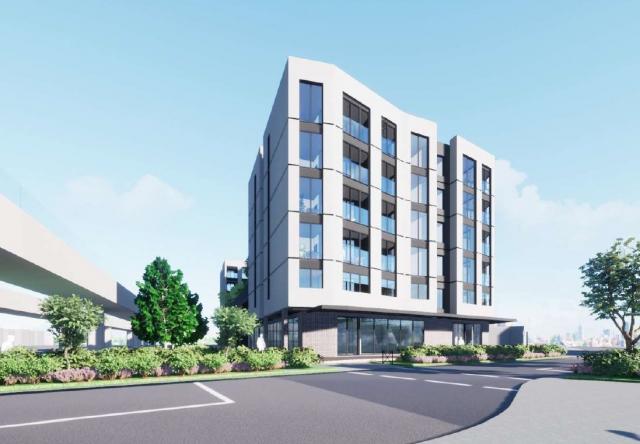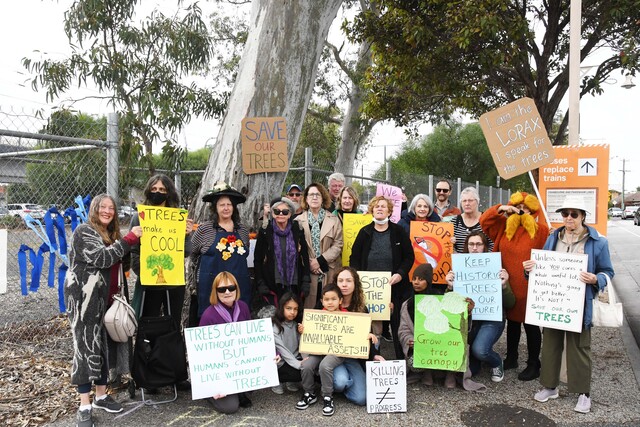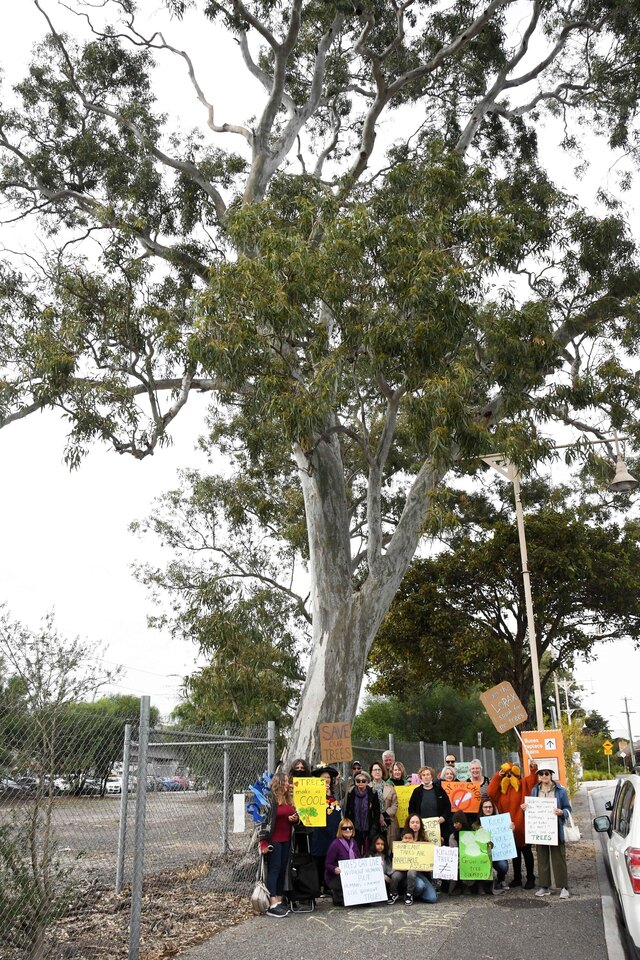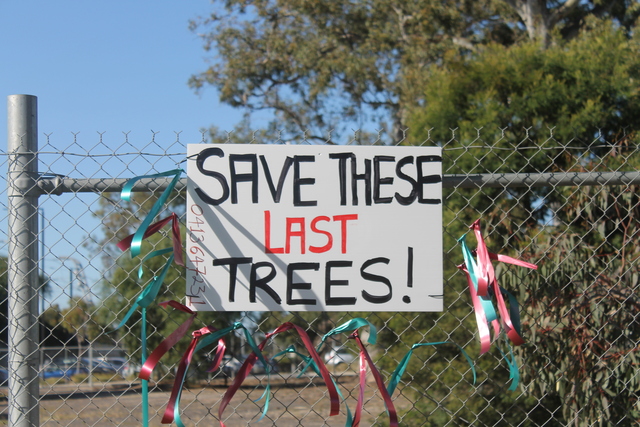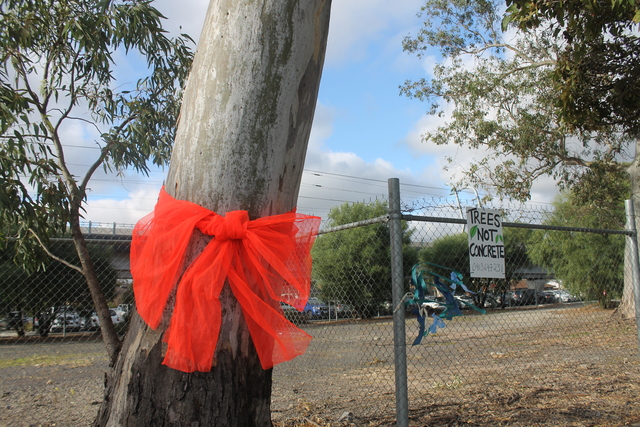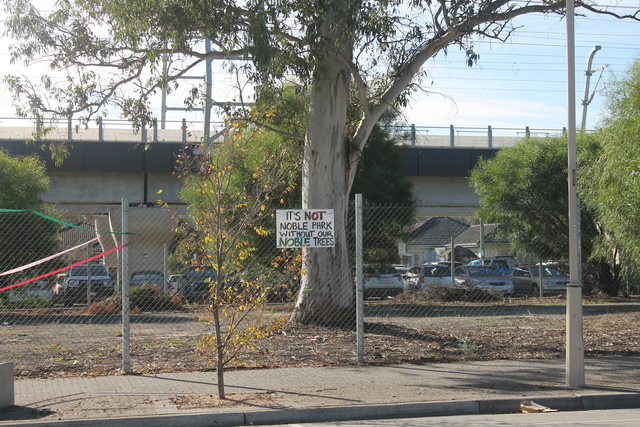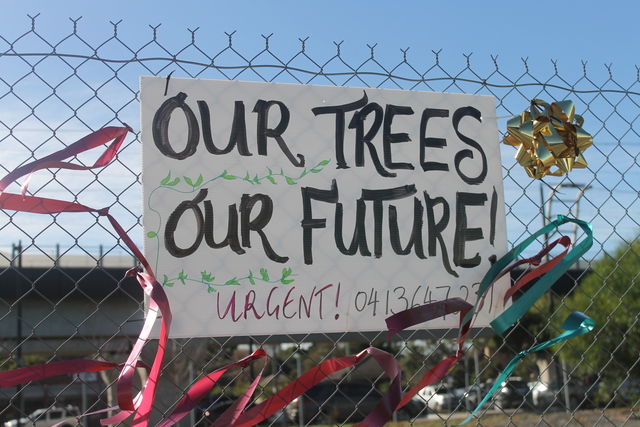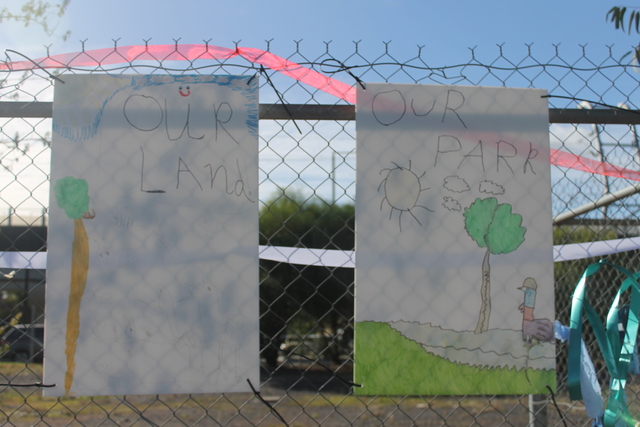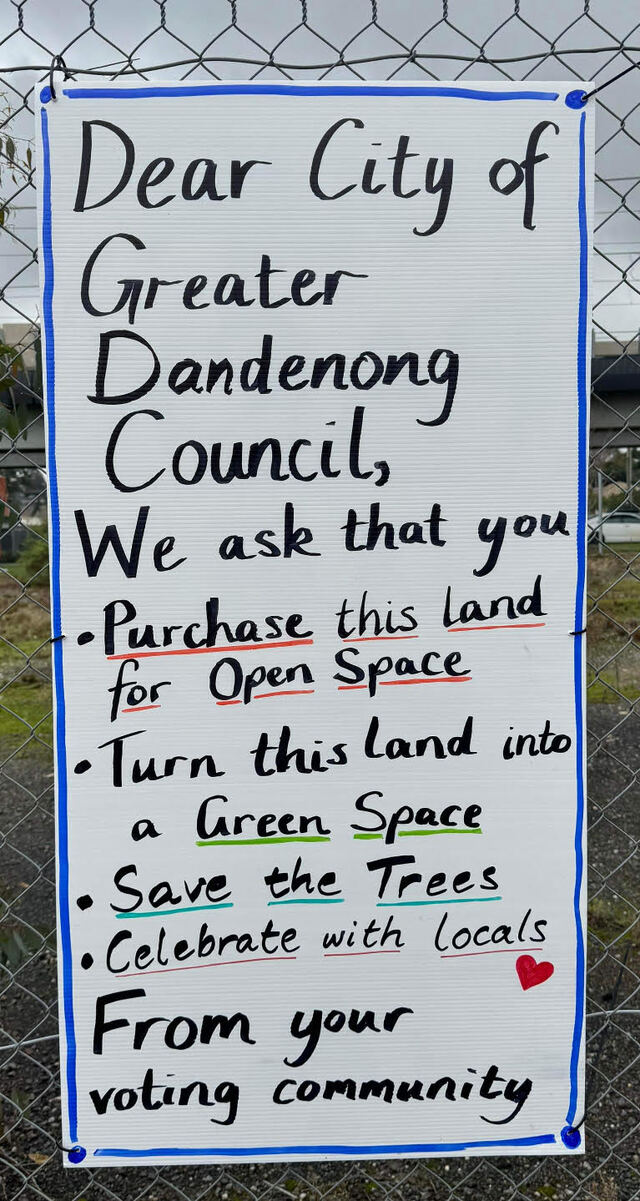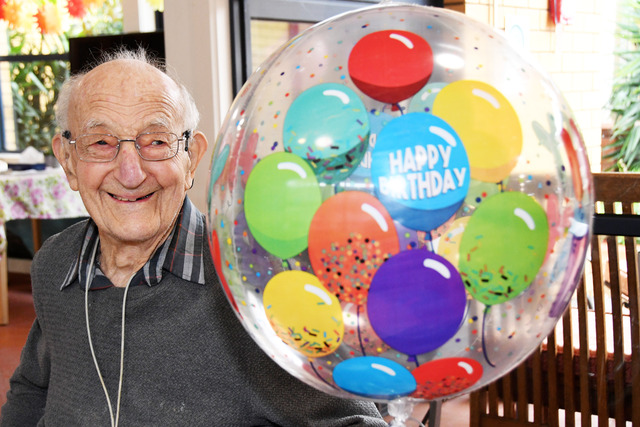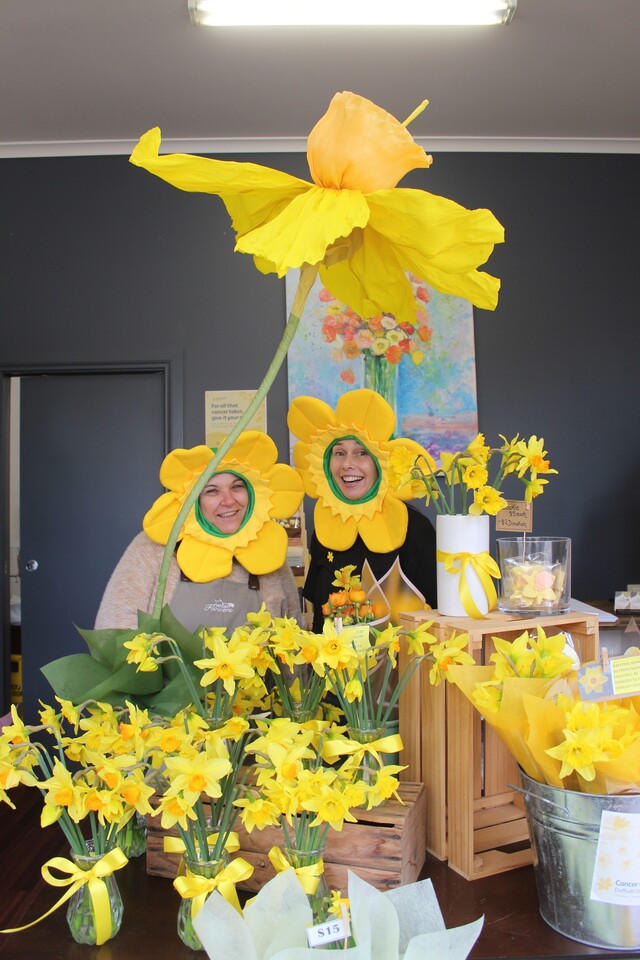An ecology expert says mature trees, such as a threatened River Red Gum in Noble Park, don’t need to be sacrificed for more housing.
Dr Gregory Moore says the 20-metre tree on the edge of a proposed six-storey apartment site at 51A Douglas Street would be a “significant loss”.
“Across Melbourne, we’re losing a lot of trees. If we keep chopping down these trees, we’ll have no 150-to-200-year-old trees in the future.
“In this case, we’d be losing more than one species – about 30-50 other species such as birds, insects and fungi depend on that tree.
“We’re going to pay a high, high price for this. So many trees are disappearing that Melbourne is going to be a hotter city and people will die as a result of heatwaves.”
Last year, Planning Minister Sonya Kilkenny controversially directed the council to issue a permit for a six-storey tower of apartments and removal of vegetation on the key development site.
It has led to a fierce community campaign for Greater Dandenong Council to buy the site for open space.
Last month, councillors voted to hold off on allowing the tree’s removal for a $150,000 developer offset – which could be used for planting 15 trees of 2.5 metres height.
The council says it is still negotiating with the developer to save the estimated 80-year-old tree, despite surveyors reportedly marking out the site last week.
Dr Moore says the issue is with the state’s planning laws, which are “very anti-tree” and “pro-development”.
“We can have much more intense development and we can have green space,” he argues.
Europe and parts of the USA achieve much higher housing density by building “upwards” with two-three storey housing while retaining 40 per cent green space on sites, Dr Moore argues.
“The model of development in Australia brings the biggest return to developers for the smallest cost – very small blocks with very large houses and very little green space.”
Developers may argue that building upwards will cost more.
“Once everyone (builds upwards), the economy of scale kicks in,” Dr Moore counters.
“When they’re developing land, they pay less for the land and maintain their profit margins.
“The ones who don’t get as much are the greenfields’ landowners who get less windfall profits from selling up.”
Being sparse of trees, Greater Dandenong and Casey are regarded as among the highest-temperature areas of Melbourne.
This puts its disadvantaged, vulnerable populations at most risk during heatwaves, Dr Moore argues.
The benefits of increasing green space – such as less hospitalisations, higher life expetancies, higher birth weights, better learning outcomes – would save “hundreds of millions of dollars” for health budgets alone.
Greater Dandenong Council is seeking to increase its canopy coverage to 15 per cent by 2028 – which is only half the rate of the most-leafy urban areas in Melbourne.
“I’m really pleased that canopy cover went up (from 9 per cent in 2021 to 14 per cent in 2023). But it’s only gone up from really, really low (levels) to low.”
.Dr Moore is a guest speaker at a Valuing Our Trees event at Heritage Hill Museum and Historic Gardens, 66 McCrae Street, Dandenong on Wednesday 19 June, 1.30pm-4pm. Bookings required at https://www.trybooking.com/CPCWF

